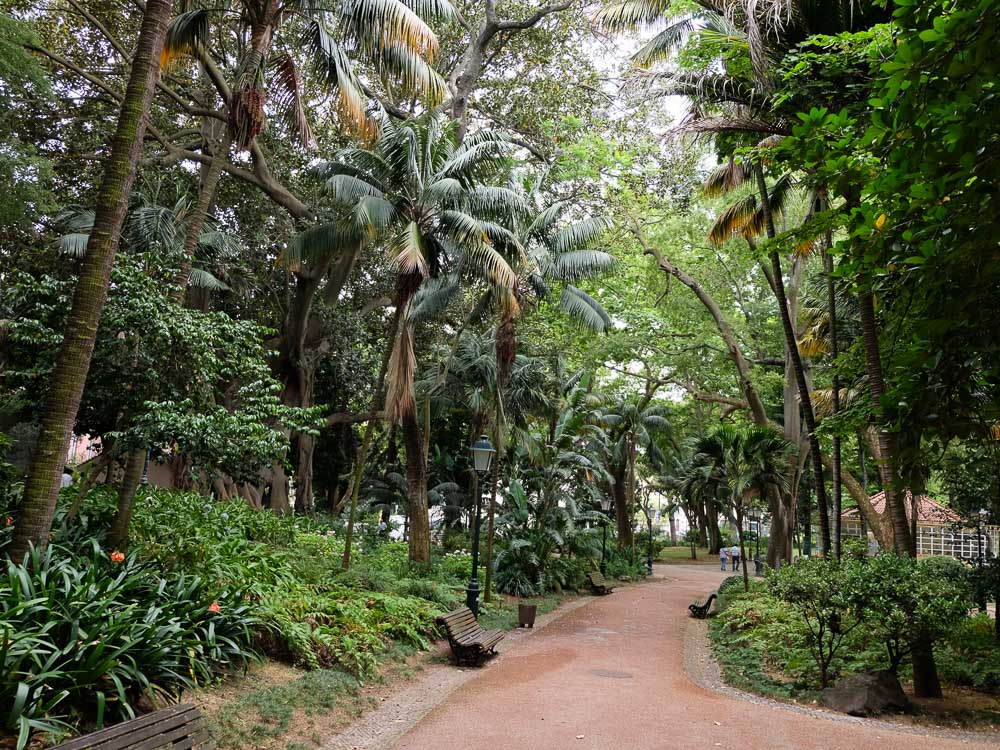Jardim da Estrela, originally named Jardim Guerra Junqueiro, is a beloved green space located opposite the Basilica da Estrela in western Lisbon.
This five-hectare park, cherished for its serene atmosphere and lush greenery, also holds historical significance tied to the legacy of Guerra Junqueiro, a prominent poet and politician instrumental in Portugal’s shift to a republic in 1910.
The park’s name was eventually changed to Jardim da Estrela, making it easier for visitors to locate due to its proximity to the basilica.
Today, Jardim da Estrela is a popular retreat for both locals and tourists, offering a peaceful escape where one can enjoy leisurely walks, picnics under towering trees, or quiet moments by the duck ponds.
In this post, I’ll tell you everything you need to know to enjoy your visit to Jardim da Estrela to the maximum!
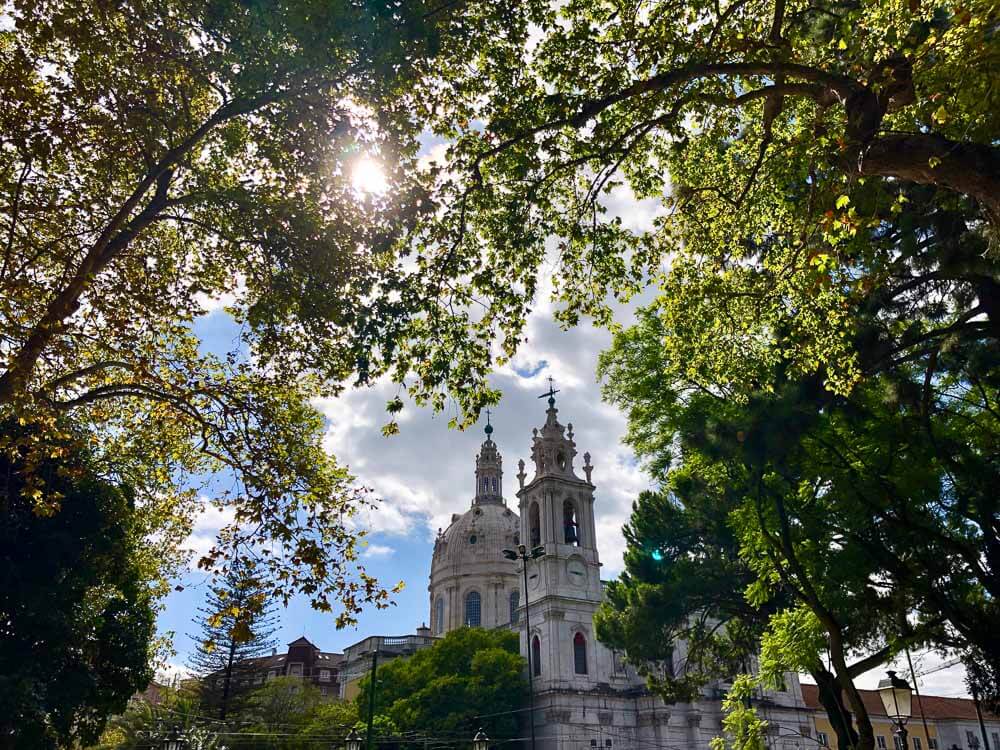
Index
- Why visit Jardim da Estrela?
- Park amenities
- Opening hours and best time to visit
- How to get there?
- Nearby attractions
- History
- Architecture
1. Why visit Jardim da Estrela?

1.1. Flora and fauna
Jardim da Estrela is celebrated for its diverse and carefully curated landscape, which includes an array of tree species such as fig, dragon trees, rosewood, ginkgo, and palms.
During spring, the blooming jacarandas cast a stunning purple-blue hue over the walkways, making it a favorite spot for photographers and nature enthusiasts.
The garden’s layout is adorned with flower beds, cacti, and a central pond with fountains, creating a soothing environment for all who visit.
On the other hand, the fauna adds further charm to the garden, with various bird species like royal ducks, swans, peacocks, and geese gracing the ponds and pathways.
The wildlife not only enhances the visitor experience but also plays a crucial role in maintaining the park’s ecological balance.
1.2. Sculptures
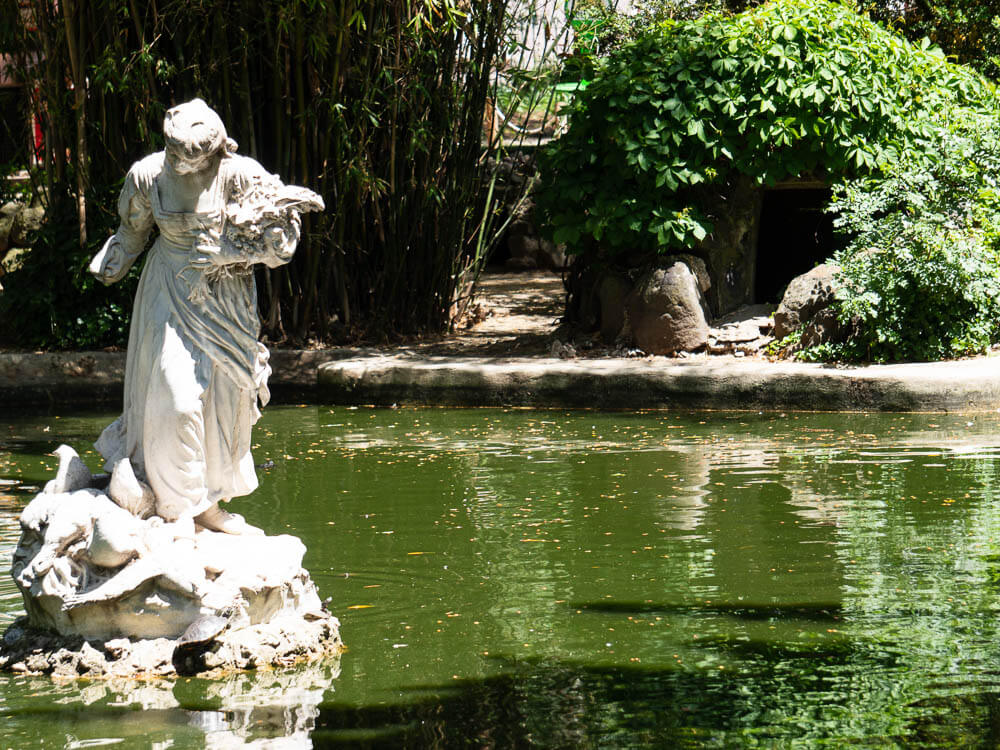
Beyond its natural beauty, Jardim da Estrela is also a haven for art lovers, featuring a collection of sculptures that enrich the park’s ambiance. Notable works include “O Despertar” by Simões de Almeida and “Guardadora de Patos,” which evoke a fairy tale-like atmosphere.
Statues of Portuguese historical figures like Silva Taborda, Antero de Quental, and João de Deus further connect visitors with Portugal’s cultural heritage. In the early 20th century, Lisbon’s city hall began incorporating contemporary sculptures into the garden, blending modern art with the park’s natural surroundings.
1.3. Events
Jardim da Estrela also hosts a variety of events throughout the year. Every first weekend of the month (except January), the park comes alive with markets showcasing local crafts and designs.
Additionally, the summer months bring a jazz festival to the garden, with performances scattered across different areas, including the bandstand. These events make the park a dynamic cultural venue where visitors can enjoy Lisbon’s arts scene in a peaceful, green setting.
2. Park Amenities

Jardim da Estrela offers a range of amenities designed for both relaxation and recreation. There’s a café within the park, which provides light meals, perfect for enjoying a break amidst nature.
The park is also home to several lakes and a pond, populated with carp, ducks, swans, and peacocks, adding to its scenic beauty.
For families, the garden includes two well-maintained children’s play areas, making it a safe and engaging destination for younger visitors.
Additionally, a Municipal Library kiosk offers books, allowing visitors to enjoy a quiet read under the shade of the garden’s trees.
The design of Jardim da Estrela prioritizes visitor comfort, with numerous seating areas and tables ideal for picnics or simply relaxing outdoors. Public restrooms are also available, ensuring convenience for all guests, including those with children.
These thoughtful amenities make the park more than just an outdoor space; it serves as a community hub that caters to diverse activities while providing essential facilities for a pleasant visit.
3. Opening hours and best time to visit
Jardim da Estrela is open daily from 7 am to midnight, offering ample time for both early risers and evening visitors to enjoy its serene environment.
The park is especially lovely during the spring and summer months when flowers are in full bloom, and the greenery is at its most vibrant. These seasons are perfect for outdoor events and picnics, making the park an ideal spot for family outings or social gatherings.
Regardless of when you visit, though, there’s always something to enjoy in Estrela Garden, from leisurely strolls to catching a live performance at the bandstand.
4. How to get there?
Jardim da Estrela is easily accessible via various public transportation options in Lisbon. Trams 25 and 28 stop nearby, offering a direct route to the park, though they can be crowded during peak times.
Buses are another convenient option, with lines 709, 773, and 774 serving the area around the garden. Bus 709, departing from Restauradores Square, stops close to the park and runs frequently throughout the day.
For those who prefer the metro, Rato station on the yellow line is about a 15-minute walk from Jardim da Estrela. The walk along Avenida Álvares Cabral offers a pleasant route, allowing visitors to explore Lisbon’s local neighborhoods while heading to the garden.
5. Nearby Attractions
Right across from Jardim da Estrela, the Basilica da Estrela is a remarkable example of Neoclassical architecture, featuring a grand dome and an intricately designed interior. Nearby, the São Bento Palace, home to Portugal’s Parliament, offers insight into the country’s political history and provides guided tours.
Other nearby attractions include the Marionette Museum, which showcases a fascinating collection of puppets from various cultures, and the Ancient Art Museum, displaying a wide array of Oriental and European art spanning several centuries.
The Campo de Ourique Market, located close to these attractions, is an excellent place to sample local cuisine and purchase regional specialties, providing a delightful end to a day of sightseeing.
6. History
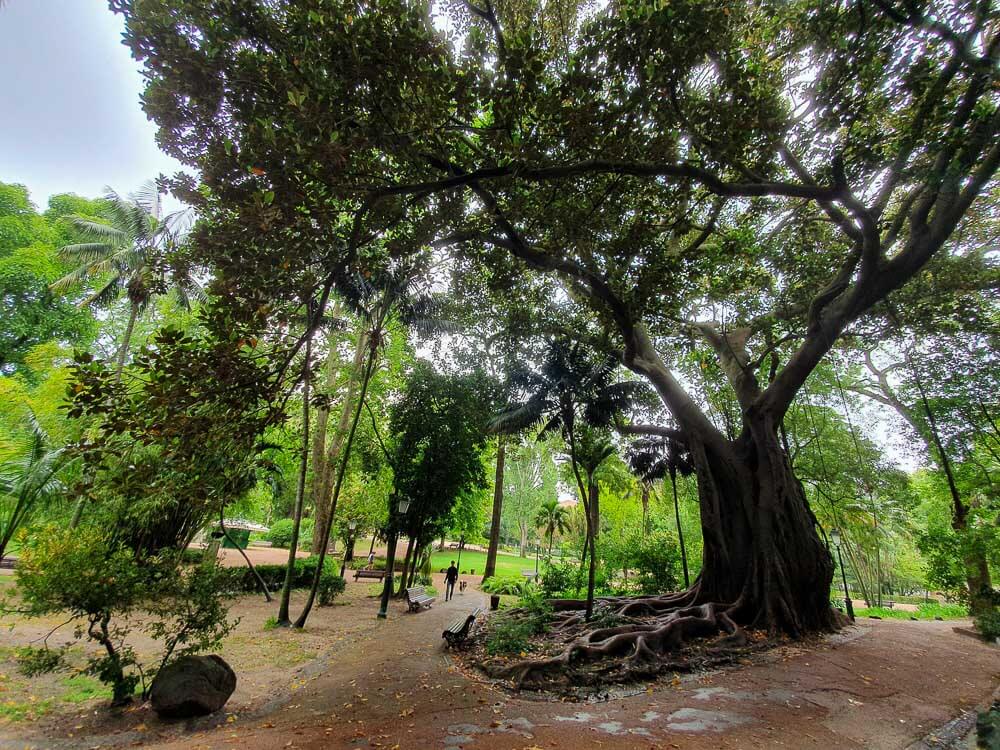
Established in the mid-19th century, Jardim da Estrela is deeply connected in Lisbon’s historical and cultural scene. The park was envisioned by Governor António Bernardo da Costa Cabral, who desired a public green space near the Estrela Basilica.
Construction began in 1842, though it faced delays due to war and financial challenges, eventually completing in 1852. In its early years, the garden became a favored spot for Lisbon’s elite, including Queen Maria II, who visited with her children.
Initially, one of the park’s attractions was a caged lion, a symbol of its grandeur at the time. Today, the park is home to ducks and other wildlife, contributing to its tranquil atmosphere.
The British Cemetery, located at the northern end of the garden, adds another layer of historical significance, with the tomb of Henry Fielding, the famous English novelist who wrote Tom Jones.
7. Architecture

The design of Jardim da Estrela, crafted in 1850 by gardeners Bonard and João Francisco, reflects the style of English romantic gardens, known for their informal and naturalistic elements.
The park once featured ornamental structures like a gazebo and a Chinese pavilion, which have been replaced over time with modern sculptures and amenities that maintain the park’s historic charm while catering to contemporary needs.
A standout feature is the 19th-century bandstand, relocated to the garden in 1936. With its intricate green wrought-iron design, the bandstand serves as both a visual centerpiece and a lively cultural spot, hosting concerts throughout the summer that attract locals and visitors alike.
Jardim da Estrela is an unmissable garden in Lisbon!
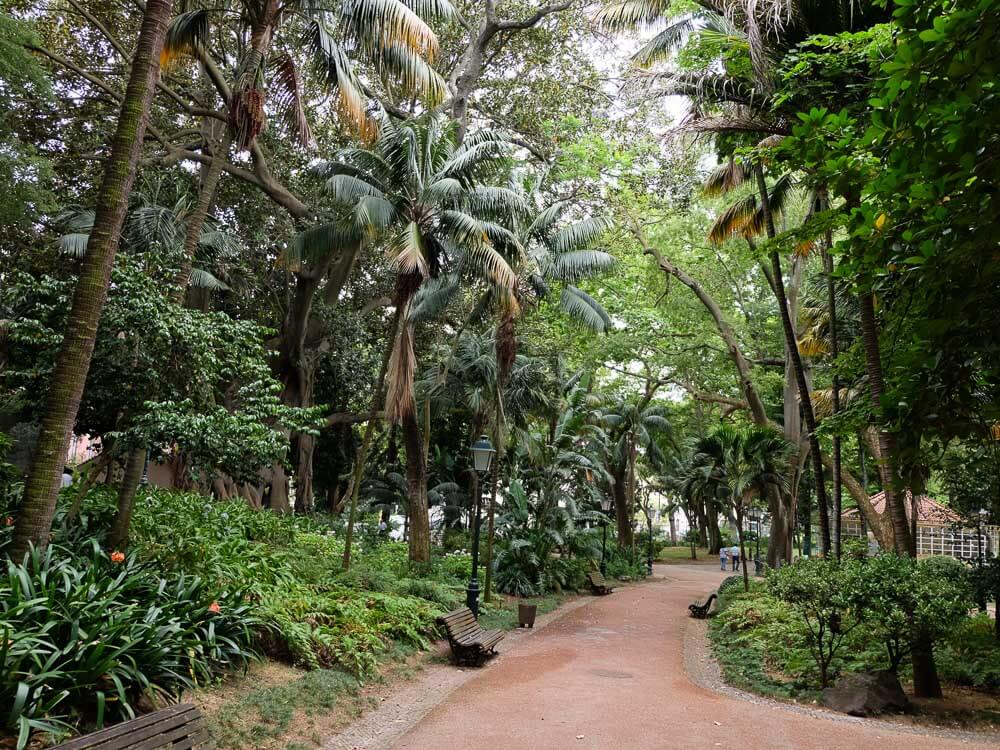
Located in the heart of Lisbon, Jardim da Estrela is more than just a park; it’s a cherished retreat that offers both tranquility and a connection to the city’s rich history.
With its well-maintained lawns, inviting pathways, and numerous amenities, it’s an ideal spot for families to unwind and enjoy the outdoors.
The park’s café, set near the play areas, makes it easy for parents to relax with a coffee or snack while keeping an eye on their children. Meanwhile, shaded benches provide perfect spots to sit back and savor the serene surroundings.
From morning coffee to evening wine, Jardim da Estrela offers a peaceful and inviting atmosphere, making it a favorite destination for relaxation in Lisbon!

